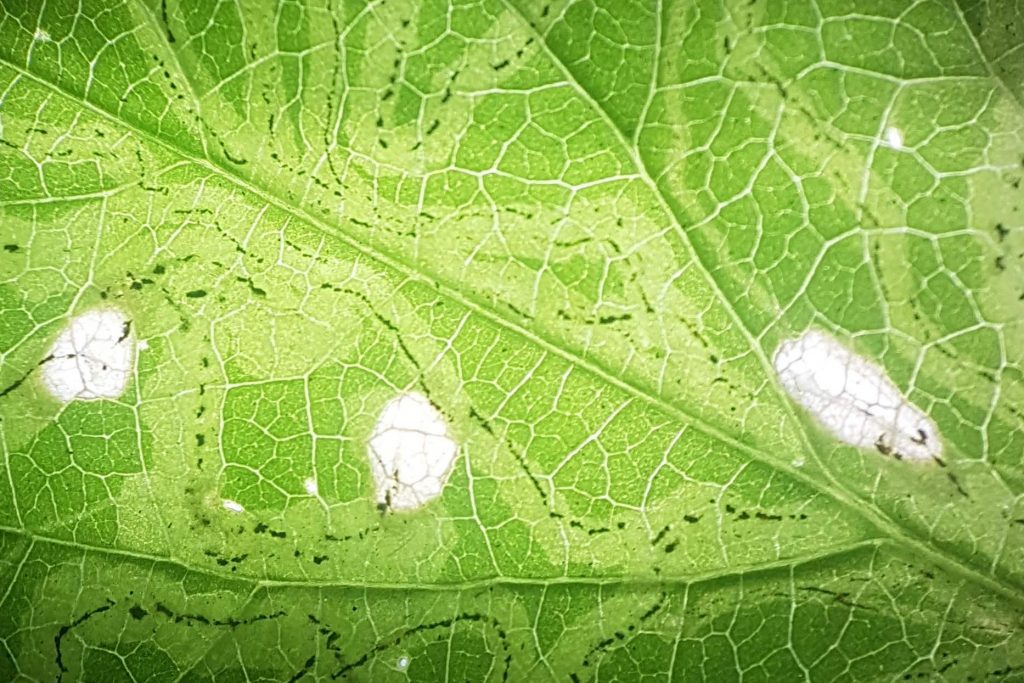Many exotic species do not lend themselves well to surveillance. They might be small and elusive. We might have a poor understanding of their hosts. Or they might be cryptic and look very similar to species already present in Australia.
The exotic vegetable leafminer, (Liriomyza sativae) falls into all of these categories!
It is only 1 mm long, it has a rapid lifecycle, it tends to have isolated and ephemeral populations when invading, it is highly polyphagous and can have unpredictable plant preferences, and both the fly itself, and their damage (serpentine ‘leafmines’ caused by the larvae chewing tunnels through leaves), are impossible to distinguish by eye from the other species of leafmining flies already found in Australia.
That’s why our researchers have been testing whether environmental DNA analysis could improve surveillance for the vegetable leafminer.
Could environmental DNA be used to survey for exotic pests like the vegetable leafminer?
All animals leave behind trace amounts of their DNA in environment (aptly called environmental DNA or eDNA): traces of saliva on a branch, skin cells on a flower, or droppings in a river.
In the case of leafminer flies, their unique feeding behaviour results in long lasting tunnels in leaves that are potentially full of their old exoskeletons and droppings.
As part of a Hort Innovation investment, our researchers have been developing a test that can exploit traces of DNA left inside ‘empty’ leaf mines to tell us which species of leafminer fly created the tunnel.
If successful, this would dramatically improve surveillance by allowing for earlier and more reliable detection, and earlier eradication and containment efforts.
The earlier these efforts begin, the higher their chances of success!
Moreover, early detection is particularly important for vegetable leafminer, as lessons abroad have taught us that inappropriate chemical management can exacerbate this pest.

Environmental DNA improves surveillance for the vegetable leafminer
Through this investment, we have shown that eDNA analysis can reliably detect vegetable leafminer – even from the old leafmines (empty for one month!).
The method was also highly sensitive, with a success rate of 80%.
Last May, we applied the test during our usual surveillance on the incursion front and were able to identify new local plant hosts and occurrence sites of vegetable leafminer, in each case from empty mines, which in the past could not have been confidently identified.
One new local host plant was particularly noteworthy as it is a widely distributed and common weed within far north Queensland communities.
The eDNA test improved surveillance for vegetable leafminer significantly. It will allow biosecurity officers and growers to collect samples of suspicious damage for quick and reliable testing.
The eDNA method is likely to become an important tool for vegetable leafminer and other exotic leafminer pests, which, historically, have been difficult to detect, diagnose and monitor.
EDNA is emerging as a highly sensitive and labour-efficient surveillance tool against exotic pests that will help strengthen Australia’s biosecurity, safeguarding our agricultural industries, health, and environment.
Acknowledgements
This study was supported by funding from Hort Innovation via the vegetable and nursery research and development levies and contributions from the Australian Government. Our project partners are the Northern Australia Quarantine Strategy (Australian Government Department of Agriculture), Plant Health Australia, AUSVEG, and the University of Melbourne.
cesar researchers thank the Cairns, Thursday Island and Seisia offices of the Northern Australia Quarantine Strategy for support throughout this project. We also acknowledge the Torres Strait Regional Authority, Torres Shire Council, Kaurareg Native Title Aboriginal Corporation, Northern Peninsula Area Regional Council, Seisia Enterprises, Apudthama Land Trust, and MyPathways who provided permission and support to conduct experiments within the Torres Strait and the Northern Peninsula Area.
Thanks to biosecurity officer, Harold Matthew, from the Northern Australia Quarantine Strategy’s Thursday Island office, and Ilana Foster, from the Torres Strait Regional Authority, for experimental assistance.
Cover image: Photo by Elia Pirtle, Cesar Australia
